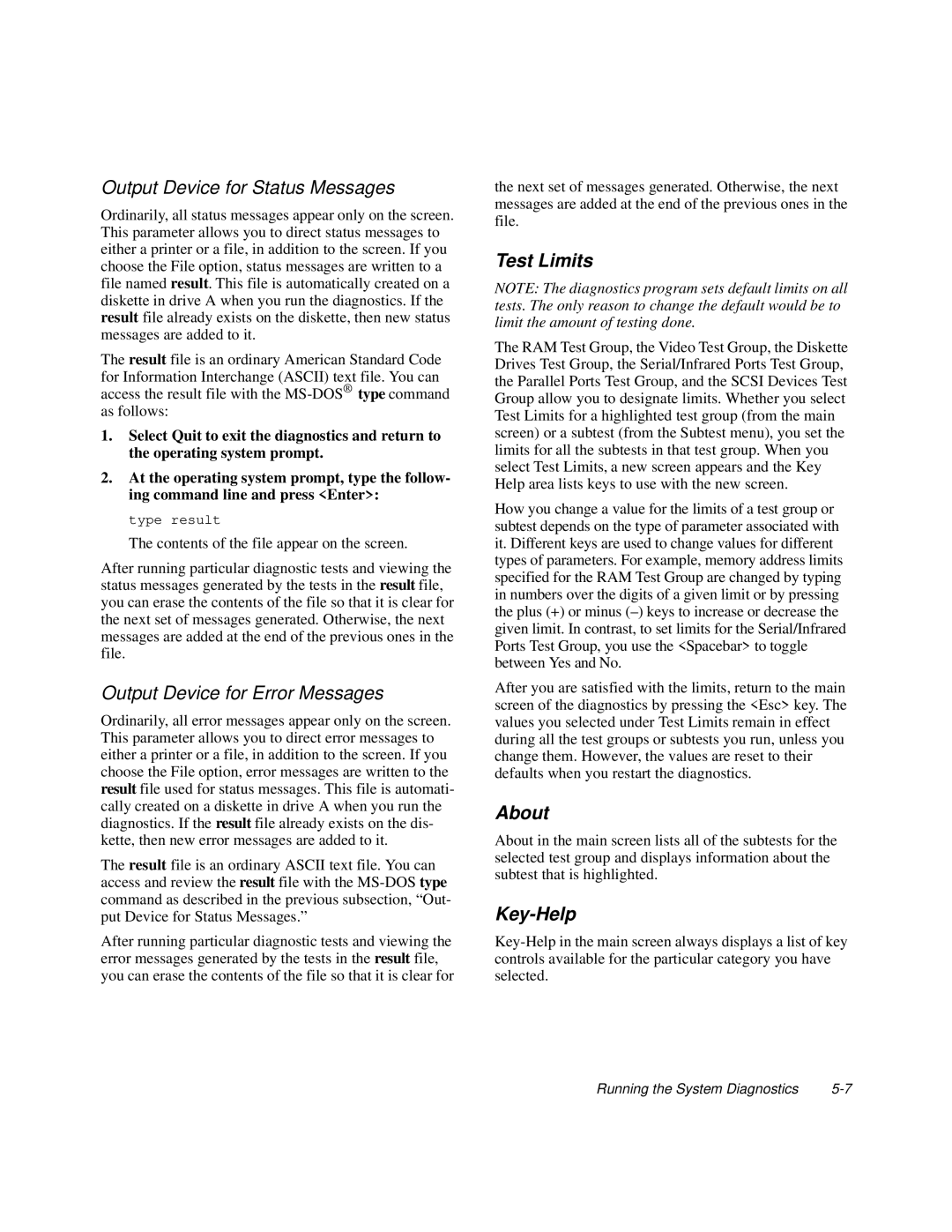Output Device for Status Messages
Ordinarily, all status messages appear only on the screen. This parameter allows you to direct status messages to either a printer or a file, in addition to the screen. If you choose the File option, status messages are written to a file named result. This file is automatically created on a diskette in drive A when you run the diagnostics. If the result file already exists on the diskette, then new status messages are added to it.
The result file is an ordinary American Standard Code for Information Interchange (ASCII) text file. You can access the result file with the
1.Select Quit to exit the diagnostics and return to the operating system prompt.
2.At the operating system prompt, type the follow- ing command line and press <Enter>:
type result
The contents of the file appear on the screen.
After running particular diagnostic tests and viewing the status messages generated by the tests in the result file, you can erase the contents of the file so that it is clear for the next set of messages generated. Otherwise, the next messages are added at the end of the previous ones in the file.
Output Device for Error Messages
Ordinarily, all error messages appear only on the screen. This parameter allows you to direct error messages to either a printer or a file, in addition to the screen. If you choose the File option, error messages are written to the result file used for status messages. This file is automati- cally created on a diskette in drive A when you run the diagnostics. If the result file already exists on the dis- kette, then new error messages are added to it.
The result file is an ordinary ASCII text file. You can access and review the result file with the
After running particular diagnostic tests and viewing the error messages generated by the tests in the result file, you can erase the contents of the file so that it is clear for
the next set of messages generated. Otherwise, the next messages are added at the end of the previous ones in the file.
Test Limits
NOTE: The diagnostics program sets default limits on all tests. The only reason to change the default would be to limit the amount of testing done.
The RAM Test Group, the Video Test Group, the Diskette Drives Test Group, the Serial/Infrared Ports Test Group, the Parallel Ports Test Group, and the SCSI Devices Test Group allow you to designate limits. Whether you select Test Limits for a highlighted test group (from the main screen) or a subtest (from the Subtest menu), you set the limits for all the subtests in that test group. When you select Test Limits, a new screen appears and the Key Help area lists keys to use with the new screen.
How you change a value for the limits of a test group or subtest depends on the type of parameter associated with it. Different keys are used to change values for different types of parameters. For example, memory address limits specified for the RAM Test Group are changed by typing in numbers over the digits of a given limit or by pressing the plus (+) or minus
After you are satisfied with the limits, return to the main screen of the diagnostics by pressing the <Esc> key. The values you selected under Test Limits remain in effect during all the test groups or subtests you run, unless you change them. However, the values are reset to their defaults when you restart the diagnostics.
About
About in the main screen lists all of the subtests for the selected test group and displays information about the subtest that is highlighted.
Key-Help
Running the System Diagnostics |
